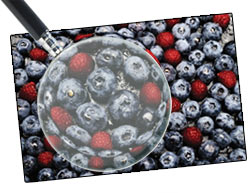
Holman’s comments reminded me of a great example of industry and government cooperation that has enhanced efficiencies and reduced costs for the government and has improved quality and safety in the dried fruit and nut industry in California. The program is the agreement or Memorandum of Understanding (MOU) between the FDA and DFA of California (Dried Fruit Association). (DFA has changed its name to the American Council for Food Safety and Quality, but many in the industry still refer to the organization as DFA.)
One program DFA has had in place for many years is quarterly surprise inspections of member plants to assure compliance with the current Good Manufacturing Practices found in 21 CFR Part 110. The association contracted with retired FDA investigators to assist in these audits. In the early 1990s, the association, under the leadership of Frank Mosebar, approached the FDA with a unique proposal. They felt that their audit program effectively assured that their member companies were in compliance with the GMPs and suggested that the DFA could relieve FDA of the burden of inspecting DFA member companies.
FDA leadership liked the concept, but could not simply adopt an industry self—monitoring program without verifying that the DFA programs were effective. Can you just hear the consumer groups howling in protest? “Industry self—inspection? That would be like letting the fox into the hen house.”
The agency looked at DFA member companies and compared them to non—member operations. After months of audits, the FDA acknowledged that DFA member companies had better sanitation standards than the non—members. In June 1994, the DFA of California and the FDA signed an MOU that “recognized that the DFA Laboratory and their sanitation standards met federal standards of consumer protection.” The MOU also entrusted the DFA with assuring member compliance with federal regulations, including immediate correction of any potential regulatory violations. If companies fail to take the necessary corrective actions, the DFA is obligated to notify FDA. According to Mike Hurley, DFA secretary and laboratory director, “The MOU has now changed into a full partnership agreement. Additionally, the Department of Health Services for the state of California has initiated a similar agreement with DFA.”

As an industry, we should be taking a closer look at what the DFA and FDA have created in California. The DFA and its members are serious about assuring they both protect consumers and maintain the trust of the FDA, but isn’t this what a quality food processor should be doing anyway?
Similar programs across the country, and between nations, should be developed. The FDA would then be able to devote their limited manpower and financial resources to areas that need attention. Often in self-monitoring programs, partners are more demanding of one another. It might even be compared to soldiers in the trenchessmall groups of people forming a bond through living, working and bleeding together. I suspect that this is one of the driving forces behind the DFA programneither party wants to let the other down.